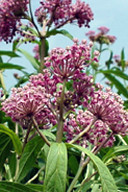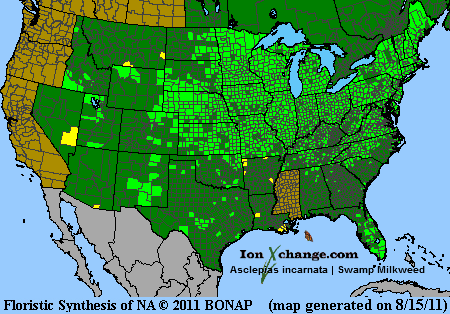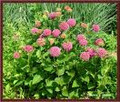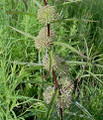 Loading... Please wait...
Loading... Please wait...- Home
- SEEDS
- SEED MIXES
- BUY PLANTS
- Info Request
-
Educational Videos
- Greenhouse Transplanting Demonstration
- Native Seed Cleaning demonstration at Ion Exchange Native Seed and Plant Nursery
- Attracting Butterflies
- Bidens - Bidens cernua Harvest Video
- Big Blue Stem Harvest
- Butterfly Milkweed Video
- Button Blazingstar - Liatris aspera Video
- Buttonbush - Cephalanthus occidentalis Video
- Canada Anemone - Anemone canadensis Harvest Video
- Cardinal Flower - Lobelia cardinalis Video
- Control Burn - Wildflower Field
- Cream Gentian - Gentiana flavida
- Culver's Root - Veronicastrum virginicum Video
- Cup Plant - Silphium perfoliatum Video
- Dormant Seeding | Planting
- Earthyman's Favorite Wildflowers Video
- Eco-Friendly Golf Course Seed Mix
- Floating Islands
- Fringed Loosestrife - Lysimachia ciliata Video
- Giant Yellow Hyssop - Agastache nepetoides Video
- Indiangrass - Sorghastrum nutans Video
- Iowa Prairie Partner Program
- Leadplant - Amorpha canescens (Potted) Video
- Meadow Blazingstar - Liatris ligulistylis
- Midland Shooting Stars - Dodecatheon meadii Video
- Native Plant Nursery Field Irrigation Experiment
- Nodding Onion - Allium cernuum Video
- Ohio spiderwort - Tradescantia ohiensis Video
- Old Man's Beard - Clematis virginiana blooms Video
- Oxeye Sunflower - Heliopsis helianthoides Video
- Prairie Spiderwort - Tradescantia bracteata
- Purple Coneflower - Echinacea purpurea Video
- Rain Garden or Water Garden Video
- Rattlesnake Master - Eryngium yuccifolium Video
- Riverbank Stabilization - Wetland Plants
- Rose Mallow - Hibiscus militaris Video
- Rosinweed - Silphium integrifolium Video
- Royal Catchfly - Silene regia
- Showy Tick Trefoil - Desmodium canadense Video
- Sneezeweed - Helenium autumnale Video
- Swamp Betony - Pedicularis lanceolata Video
- Swamp Milkweed - Asclepias incarnata Video
- Sweet Blackeyed Susan - Rudbeckia subtomentosa Video
- Tall Coreopsis - Coreopsis tripteris Video
- Urban Butterfly Garden
- Wild Bergamot - Monarda fistulosa Video
- Wild Geranium - Geranium maculatum Harvest
- Wild Goldenglow - Rudbeckia lanciniata Video
- Wild Petunia - Ruellia humilis Harvest Video
- Woodland Knotweed - Polygonum virginianum Video
- Yellow Coneflower - Ratibida pinnata Video
- Blog
- Resources
- Policies
Contact Us
Phone:
563-419-0837
or 563-535-7231
Email:
hbright@ionXchange.com
Browse Products
Add to Wish List
You Recently Viewed...
Our Newsletter
ASCLEPIAS INCARNATA | Swamp Milkweed
Product Description
Swamp Milkweed (Asclepias incanata) - Sometimes referred to as Red Milkweed, this fragrant flower is the favorite host for Monarch butterflies. Later in the season, the large pods will break to reveal seeds that will disperse in the wind. Deer resistent, grows in average to moist soils, common in wetland settings. Excellent fall planting from seed.
Asclepiadaceae Family - "Swamp Milkweed, Rose Milkweed, Silkweed, Water Nerve Root, White Indian Hemp"
Asclepias, from the Greek God of healing and medicine and incarnata from the Latin for "flesh", referring to the color of the flowers.
Found from Wyoming and Manitoba to Quebec, south through New England, South Carolina, Tennessee, Louisiana, Texas and New Mexico. Prefers moist soils at the edges of prairie potholes, sedge meadows and marshes. Blooms with pale-pink to rose-purple flowers from June through August. Can reach heights over 5 feet.
| Sun Exposure | Prairie |
| Soil Moisture | Mesic, Wet Mesic, Wet |
| Bloom Time | Summer June, July, August |
| Bloom Color | Red |
| Max Height | 5 feet |
| Wetland Code | OBL |
| Germ Code | C(30) |
| Seeds Per Packet | 100 |
| Seeds Per Ounce | 4,800 |
The Milkweed Family has a long history of medicinal use. Asclepias incarnata was also cultivated for food uses, so it has been a valuable plant of the tallgrass biome for thousands of years. Some tribes added the flowers and bulbs to soups, some used the flowers stewed and served almost like preserves, immature pods were often cooked with buffalo meat and still others used the immature flower clusters and fruits as a cooked vegetable.
Medicinally, the ground root of this species was used to induce temporary sterility, tea made from the root was used to "expel internal parasites" and the ground seeds were used in a poultice to draw the poison from a rattlesnake bite. The sap was rubbed on warts to make them disappear. The Rappahannocks even used the sap to cure ringworm.
During WWII, the sap of the milkweed family plants were used experimentally to provide a rubber substitute. The silk produced by the seed pods was also used as a substitute for kapok in flotation devices for many years.
A few Native American tribes used wild ginger tea as a contraceptive. The Chippewa used it to treat indigestion. Still others chopped up the plant, wrapped it in a water plantain leaf and used it as a poultice to treat burns and skin inflammations. (Scientists have actually isolated the active ingredient in the plant and it is a powerful antiseptic.)
Edible Uses:
Unopened flower buds: Cooked. Tasting somewhat like peas. They can also be dried and stored for later use.
Young shoots: Cooked. An asparagus substitute. Tips of older shoots are cooked like spinach.
Young seed pods: Harvested when 3 - 4 cm long - cooked. A pea-like flavour, they are very appetizing. The flower clusters can be boiled down to make a sugary syrup.
Medicinal Uses:
A tea made from the roots is anthelmintic, carminative, diuretic, emetic, strongly laxative and stomachic. The tea is said to remove tapeworms from the body in one hour. It has also been used in the treatment of asthma, rheumatism, syphilis, worms and as a heart tonic.
An infusion of the roots is used as a strengthening bath for children and adults.
Other Uses:
A good quality fibre is obtained from the bark. It is used in twine, cloth etc. It is easily harvested in late autumn, after the plants have died down, by simply pulling it off the dead stems. The seed floss is used to stuff pillows etc or is mixed with other fibres to make cloth. It is a Kapok substitute, it is used in Life Jackets or as a stuffing material. It is very water repellent. The floss has also been used to mop up oil spills at sea. Rubber can be made from latex contained in the leaves and stems. Pods contain an oil and a wax which are of potential importance.
Herbal Uses: Unknown
Product Videos
-
 Swamp Milkweed...Earthyman views Swamp Milkweed (Asclepias incarnata) in full b...
Swamp Milkweed...Earthyman views Swamp Milkweed (Asclepias incarnata) in full b... -
 Earthyman view...Earthyman views Swamp Milkweed - Asclepias incarnata in full b...
Earthyman view...Earthyman views Swamp Milkweed - Asclepias incarnata in full b...

Product Reviews
-
INCARNATA GREAT BUTTERFLY HOST/NECTAR PLANT

Posted by C.E. on 17th Oct 2014
Very strong root system, great looking plug. Would and will buy from again.
-
Nice plants

Posted by Julie Borneman on 30th Jun 2014
These had pretty good roots although the plants were a bit leggy. Could have been trimmed back early on to encourage multiple stems. Overall a nice little plant. Thanks!
-
Great product

Posted by Alex on 13th May 2014
Great product as all of the wildflowers came intact and in great condition. Excellent service.















